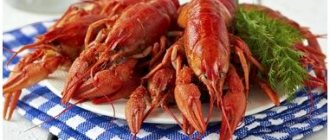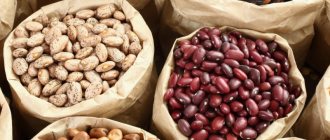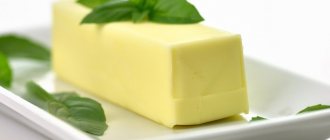It is impossible to imagine a holiday table without salads. Housewives try to diversify the menu by preparing different types of cold dishes. It is advisable not to leave salads after dinner, because this is a perishable product, and if you don’t know what the shelf life of the dish is, you can even get poisoned.
The shelf life of such food is specified in Appendix 1 to SanPiN 2.3.2.1324-03 “Hygienic requirements for shelf life and storage conditions of food products” and GOST R 54703-2011.
Shelf life of Olivier salad
It is known that the deadlines for the sale of cold dishes at catering establishments and retail outlets are short and very strict.
This is due to the fact that violation of established requirements can lead to serious consequences: food poisoning and stomach upsets. At home, housewives also often think about how long salads can be stored and how to properly maintain the quality of food at the highest level.
In order to preserve the Olivier salad for as long as possible and serve it fresh on the table, we recommend that you store all the ingredients separately, not seasoned with mayonnaise. You will always have time to add it to your meal, for example, immediately before a meal, but this approach will significantly extend the storage time.
According to SanPiN standards, the shelf life of Olivier is:
- For Olivier without mayonnaise at a temperature from +2°C to +6°C - 12-18 hours ;
- For Olivier with mayonnaise at temperatures from -2°C to +2°C - 9-12 hours ;
- And only 3-4 hours for the finished Olivier salad, standing on the table at room temperature.
Scientific classification of lettuce culture
Lettuce or scientifically “lettuce” is an annual plant of the Asteraceae family. There are two varieties of lettuce plants: 1. Lactuca sativa var. secalina leaf lettuce. 2. Lactuca sativa var. capitata head lettuce. Its leaves form a dense head. From the beginning of the growing season, a rosette of lower basal leaves develops, and then a stem is formed. The inflorescences-baskets are small, shaped like a pitcher, forming cylindrical heads. The flowers of the plant are bisexual, small, yellow in color. The fruit of the plant is an achene with a fly.
| Scientific classification of Lettuce, Lettuce (Lactuca sativa) |
| Domain: Eukaryotes Kingdom: Plants Division: Flowering Class: Dicotyledons Order: Asteraceae Family: Asteraceae Genus: Lettuce Species: Lettuce sativum
Cultivating lettuce greens for sale is very profitable, especially during the winter months. A properly thought out and arranged greenhouse, even with a small size, allows you to earn money every year. The plant is characterized by rapid growth, is practically not susceptible to diseases, and the yield of lettuce in the greenhouse is high. The benefits of salad are due to the rich content of vitamin compounds and minerals. Excellent taste has a positive effect on sales of greens. Not many people decide to start growing watercress in a greenhouse. For personal consumption, it is quite possible to grow lettuce on a windowsill in winter. In the southern regions, growing greenery on the balcony of an apartment or the enclosed veranda of a private house will help satisfy the needs of greenery for a small family. You can grow lettuce in a hydroponics system. Before you start growing lettuce in a greenhouse, it is important to study all the features and pitfalls of greenhouse production. An error in calculations can lead to losses instead of the expected income What are the advantages of growing lettuce in a greenhouse:
Disadvantages of growing crops in greenhouses
|
Shelf life of salad “Herring under a fur coat”
What would New Year be without our beloved herring under a fur coat? When storing this type of salad, it is necessary to clearly distinguish how it was prepared: factory-made or at home.
Please note that if you read on the packaging label that the salad is suitable for consumption within 10 days, it most likely included a special preservative additive called “Antibac”. Usually in this case you will not find an ingredient like boiled eggs in its composition.
- If you make your own salad, the shelf life of the product will be no more than 2-3 days ;
- If you purchased “Herring under a fur coat” in a store , due to the factory vacuum packaging, the shelf life will be slightly longer - from 4 to 5 days ;
- Salad bought in bulk can be stored for no more than a day .
Features of storing vegetable and fruit salads
Salads made from fresh fruits or vegetables are stored the least. Ideally, they should be consumed immediately after preparation. Despite this, there are several nuances, the observance of which will slightly extend the freshness of the components:
- You can cook only from thoroughly dried ingredients without the slightest sign of moisture. The mixing container and tools must also be completely dry and cool.
- Ingredients such as boiled eggs and various preservatives should be added to the dish last, just before serving. They need to be cut quite large.
- If there is a need to hold the finished dish for a short time, it is recommended to line its bottom with a paper towel. The finished composition also needs to be covered with a paper product and pressed lightly to the surface. Then wrap the container in film and cover with a lid.
- The dressing can also be prepared in advance, but it will have to be stored in an airtight container.
- If the time of consumption is delayed, then the salad container must be checked every three hours. We change wet towels and mix the ingredients.
- In the case of fruit, it is recommended to first place each component in a colander to allow excess juice to drain.
- Sliced apples, pears and other ingredients prone to browning should be sprinkled with citrus juice. This will not only preserve their attractive appearance, but also add a subtle aroma.
- The dish will have a nice and crisp texture if the ingredients (fruits or vegetables) are first soaked for a few minutes in ice water.
Following the recommendations for preparing fruit and vegetable salads allows you to increase their shelf life from several hours to 5-7 days without the risk of loss of taste.
In a refrigerator
The duration of storage is influenced by the type and quality of ingredients used, the presence of dressing, temperature and light conditions, and humidity level.
According to SanPiN standards, salads prepared in catering establishments must be sold within 30 minutes, and those sold in a hypermarket are stored for no more than 12 hours at a temperature of 4 ± 2 °C.
A self-prepared cold dish is most often placed in the refrigerator for a period of 6 to 48 hours, depending on the composition.
Refueled
The filling is of great importance in determining the maximum shelf life of the mixture. The most popular include:
- Vegetable oil (sunflower and olive);
- Mayonnaise;
- Sour cream, yogurt;
- A variety of sauces (“Caesar”, “Pesto”, “Thousand Islands” and others).
The most short-lived dressings are those based on fermented milk: they begin to deteriorate after 60-90 minutes. Salad dressed with oil will last in the refrigerator for 12 hours.
The use of mayonnaise and various sauces with the addition of preservatives allows you to preserve nutritional value for 24 hours. Over time, the taste of food deteriorates.
No refill
According to sanitary standards, undressed salads are stored longer: approximately from 18 to 36 hours, taking into account the ingredients they contain.
As a general rule, it is recommended to add the sauce no earlier than 30 minutes before serving. If it is not possible to prepare a cold appetizer immediately before a meal, it is recommended to cut the ingredients and place them in separate containers rather than mix them. Glass and plastic sealed containers are ideal for this purpose.
Mayonnaise dressing
Mayonnaise has a longer shelf life, but it is still quite small and does not exceed 6 hours. Of course, now this shelf life is practically not observed anywhere, since salad with mayonnaise can be stored longer without any harm to the body, but the dish will lose its taste quite quickly. Moreover, even nutritionists agree that for salads it is best to use a store-bought product, which, although not as high quality as home-made mayonnaise, has a longer shelf life due to preservatives.
At room temperature
If for some reason you cannot use the refrigerator to place the food, then you can store it at room temperature. Of course, the shelf life will be reduced significantly, namely:
- Mayonnaise - from 3 to 5 hours.
- With sour cream – 30-45 minutes.
- With vegetable oils – 2-3 hours.
- Containing fresh vegetables and fruits - up to 120 minutes (it is recommended to consume immediately, since these components very quickly lose moisture, and then their appearance and taste).
It is best to place the dish in a porcelain or glass bowl, cover with a lid and place in the coolest, darkest place in the apartment (in winter, on a balcony, window, etc.).
How long and how can you store salad with mayonnaise, sour cream, olive oil?
Despite the fact that on average the shelf life of salads with different dressings is approximately the same, some points may affect how much and where to store the product:
- Sour cream, even natural, begins to sour after half an hour at room temperature. In the refrigerator this period does not increase much. For this reason, Olivier salad, herring under a fur coat, and even fresh vegetables can be seasoned with this ingredient only after the preparation has been laid out on plates. Whatever the consumption period is indicated on the product packaging, after opening the container it is reduced to 6-10 hours, and when transferring the sauce to a new container - to 3 hours.
- In the case of mayonnaise, the time period increases slightly, but still does not amount to more than 6 hours. The mass can be stored longer without risk to health, but its taste properties will noticeably suffer.
Advice: Even professional chefs and nutritionists believe that it is more correct to use ready-made mayonnaise with preservatives for dressing salads, rather than a natural homemade product. This will slightly extend the storage time of Olivier or herring under a fur coat.
- Olive and other unrefined vegetable oils are good preservatives, but not in the case of salads. By reacting with the chemical components of the components, such dressings only accelerate the process of their destruction. It is generally not recommended to store salads dressed with sauces based on vegetable oils. It is better not to keep them at room temperature for longer than 1-2 hours.
To assess the quality of the salad, you need to inspect it and move it to one side of the container. If the appearance, smell and texture have not changed, and liquid has not appeared on the vacated part of the container, the dish can be tasted and served.
In the freezer
Not all components can survive freezing. For example, fresh vegetables (cucumbers, tomatoes, avocados) lose their elasticity and become limp after defrosting. Only boiled vegetables, meat and fish should be placed in the freezer. For this:
- cut all the ingredients, put them in a vacuum bag, evenly distributing the pieces over its entire area (separate storage of ingredients is allowed). Sealed packaging will protect the contents from foreign odors.
- Do not add spices or dressing.
- Enter the date and time.
This mixture will keep in the freezer for about a month.
To defrost, place the bag in the refrigerator for 120 minutes and then place it at room temperature. Liquid may form during defrosting and must be drained.
Freezing always degrades the taste of food - remember this.
Half-headed lettuce varieties
Semi-headed lettuces are characterized by a raised leaf rosette, with a loose head formed in its center. Most varieties have an average period of ripeness. Most often they are cultivated from seedlings, but can also be sown directly into the ground. There is a wide variety of varieties.
The most popular varieties for greenhouses: Berlin yellow, Festival, Stone heads.
Young varieties:
Podmoskovny - has a high value due to its long shelf life - up to 10 days. The leaves are crispy and have excellent taste.
Azart is a plant with delicate leaves, the rosette is raised. It has good taste, the leaves are without bitterness. Able to withstand short-term temperature drops down to -5°C, after thawing it does not lose its original properties. The mass of the green mass of the plant reaches 280-330 grams. The period from planting to harvesting is 60-70 days.
Lolla Rossa is a common variety with curly leaves weighing up to 200 grams or more. The foliage is juicy and tender, the leaf color ranges from rich green at the base to burgundy towards the edges. Ripening period is 55 days. It is characterized by resistance to stemming; the recommended distance between plants when planting is 25 cm.
Gribovsky kucheryavets (Kudryavets) is a popular variety with high yield. A head of plant weighing up to 450 grams or more. Ripening time is 60-70 days. Characterized by resistance to most diseases.
Recommended planting scheme for semi-headed varieties: 20X25 cm, planting in the ground from April to the first half of July. Cleaning is carried out from the second half of June until the beginning of October.
By type
Meat
“Chicken Caesar”, “Capital”, “Monomakh’s Hat”, “Men’s Dreams”, “Tiffany” contain meat products that increase the risk of proliferation of pathogenic microorganisms.
The shelf life in this regard will be no more than 2 days.
Fish
Salads “Mimosa”, with crab sticks, with squid and egg, with shrimp, with tuna and cod liver will retain their nutritional value for 2 days (without sauce). Store dishes containing fresh or lightly salted fish with caution.
Vegetables
Cuts from fresh vegetables (Greek, brush, asparagus, etc.) are usually not stored, so this snack must be eaten immediately or within the next 12 hours.
Dishes with the addition of natural preservatives (vinegar, onion, salt, spices, for example, for Korean carrots, vitamin or chuka salad with the addition of funchose, seaweed) will last at a temperature of 4 ± 2 ° C for 2-3 days. If we are talking about boiled vegetables (beetroot, vinaigrette, beets with garlic), then the organoleptic properties will remain throughout the day.
With mushrooms
When storing mushroom salads, keep in mind that using home-canned food increases the risk of contracting botulism. Place in the refrigerator for no longer than a day. Add fried or boiled champignons, oyster mushrooms and porcini mushrooms last.
Fruit
According to GOST and sanitary rules, fresh fruit salad cannot be stored.
If we are talking about adding, for example, canned pineapples or green apples as an ingredient, then you should focus on general standards. Adding lemon juice will help prevent sweet fruits from darkening.
Sea kale salad
Nowadays, seaweed salads are becoming increasingly popular because they are very healthy and contain a lot of iodine. In relation to them, it is worth understanding that the usual shelf life of salads does not apply at all. You just need to carefully follow the recommendations for storage periods and rules indicated on the packaging. However, once opened, the salad is best eaten within a couple of days.
But if you decide to prepare this dish yourself from dried seaweed, then it must be stored for no more than 3 months at a temperature of 3-4 degrees.
How to determine delay
Here are some tips for identifying an expired product:
- When purchasing in a store, pay attention to the tightness of the packaging, production date, and temperature conditions.
- Evaluate the appearance and aroma. If there is a sharp and unpleasant odor, and the mixture of components is unsightly: with signs of weathering, similar to a soggy substance, refrain from using it.
- If mold is suspected, discard food immediately.
- A rancid or sour taste indicates the beginning of the inevitable process of decomposition of the ingredients.
Lettuce varieties
Plants are represented by a large variety of varieties. For planting in protected soil, early ripening varieties for greenhouses with good taste and high yield should be selected. It is better to abandon experiments with growing varieties with non-traditional colors, since the grown products may not be in demand.
Preference is given to lettuce seeds for the greenhouse. It is recommended to purchase seeds of the first class, with sowing characteristics: purity of at least 99%, germination rate of more than 80%, weight of 1000 seeds 0.8-1.3 g; relative storage humidity – 13%.
Popular varieties of lettuce
It is better to choose leaf varieties for growing in a greenhouse. Harvesting the green mass of a plant involves cutting off the leaves; the root of the plant is not pulled out of the soil.
The leaf size is large and can have different shapes: triangular, dissected, fan-shaped. The color of the leaf depends on the specific variety and can be from light green to dark green, pinkish, brown or dark red. The edges of the leaf are smooth or wrinkled, bubbly, faceted.
Lettuce varieties for the greenhouse
Aficyon is a variety of Batavia variety. The color is rich green, the structure is dense, does not form an arrow. It is characterized by excellent taste and productivity, and is unpretentious for cultivation. For Aficion, growing in a greenhouse does not require any special agrotechnical requirements.
Odessky Kucheryavets is a variety of medium ripening period. Leaves with a rich green color, corrugated, succulent. Pronounced taste and high yield. During the growing season, Odessa Kucheryavets is capable of producing up to three full harvests.
Kitezh is one of the popular early varieties. Folded leaves, undemanding to lighting, pleasant taste. Resistant to pests and diseases. Productivity reaches 3.5 kg/sq.m.
Tornado is a modern crispy variety. Grown by seedlings, sowing from March to May. Planting in the ground from the first days of June, from the beginning of August or before the start of winter. It is characterized by an average ripening period of approximately 55-65 days. Tall variety, leaves up to 30 centimeters. It has excellent taste, high yield and resistance to stemming.
Ballet is a young variety obtained by domestic breeders. High-yielding, crispy leaves. The leaf shape is fan-shaped, the leaf color is rich green, the edges are faceted. Weight 400-600 g. The variety is recommended to be grown using seedlings or sowing in the ground. It is resistant to low light and is not susceptible to blooming.
Emerald Lace is an early ripening variety with rich green leaves, ruffled along the edges. An excellent choice in low light conditions. Not prone to flowering, average yield – up to 5 kg/sq.m.
Moscow Greenhouse is an early ripening variety. From germination to harvesting 30-40 days. Bush weight from 70 grams and above.
Dubachik MS is a lettuce variety bred by Czech breeders. Characterized by an average ripening period. From the first shoots to harvesting, 40 days pass. Plant weight is from 90 grams, the leaf is slightly wavy, light green in color. It is actively cultivated due to the ability to grow new leaves to replace those that were cut off during harvest. Not subject to coloration.
Roblen - bred in the Czech Republic. It is characterized by an average period of ripeness (up to 50 days). It has a high rosette, 25-32 cm in diameter. The leaf color is dark red, the surface is medium-wavy. Plant weight up to 90 g. New leaves grow in place of cut leaves.
Dubrava is a local variety. It is characterized by an average ripeness period (60 days), some leaves can be collected earlier. It has a dense rosette with a size of up to 40 centimeters in diameter and a weight of up to 200 grams or more. The leaf color is light, the shape is slightly wavy. Valued for its excellent taste and delicate leaf.
Zabava is a variety obtained as a result of selection by domestic specialists. Mid-season, plants with a rosette diameter of up to 40 cm and a weight of about 200 grams. The variety is characterized by high resistance to pests and diseases. The leaf color is reddish, the length is 25 centimeters or more, and is characterized by excellent taste. The leaves are collected from July to October. Emerald is a young variety, the result of domestic selection. Usually cultivated in the ground, weighing 60 grams or more. It is valued for its excellent presentation, is resistant to stem formation, and has an excellent taste.
The planting pattern can be different; most often, leaf lettuce seeds in the greenhouse are sown every 30-33 cm. Watering is carried out regularly as the soil dries. After planting, shoots appear within 3-5 days. The temperature regime for rapid development of the plant should be in the region of 20..22°C.
Recommendations
- Try to cook as needed and eat immediately after preparing food.
- Use only fresh products with current expiration date.
- Add the dressing only before serving.
- Follow the recipe when cooking.
- Avoid re-freezing.
- Store in a glass or plastic container with a lid, taking into account the product's proximity. Do not place in an aluminum pan: this will cause a chemical oxidation reaction that will speed up the spoilage of the dish.
- Remember that the greatest risk of food poisoning comes from raw, uncooked ingredients.
- The components should not be mixed in advance. It is optimal to place in different containers and put in the refrigerator.
Red leaf salad
Salads of red-leaved varieties, due to their unusual appearance, are in high demand among some gardeners. The determining factor in the formation of leaf color is weather conditions.
Many gardeners are surprised why, instead of the brown color of the plant shown on the seed package, the leaves actually grew bright green.
It's all about temperature conditions; if a plant grows in hot conditions, then the leaf is most often green. With the onset of autumn, the intensity of the plant's growing season noticeably decreases, the leaves acquire the color characteristic of the variety. This is taken into account when cultivating red-leaf salads.
Requirements for serving main courses
Before bringing main courses to the table, used dishes and cutlery are removed (washed). If a common dish is served and then divided into portions, take it out in a large container. Place heated dinner plates in front of the guests and divide the dish into portions. The same rules apply for serving side dishes. The pre-prepared dish is brought out in its entirety for display, after which it is divided into portions in the kitchen.
Dishes in frying pans are placed on warm snack plates, directly in front of the guests. Additionally, hot sauces are served in metal sauce boats, or chilled in small plates or special bowls. The requirements for serving second hot courses include compliance with the temperature regime, which may vary, depending on the recipe of the dish, the ingredients included in it and the classification of the establishment.
Headed varieties
Headed varieties are characterized by high yields, but also a longer ripening period. They have higher requirements for agricultural technology than leaf varieties. Plants require good lighting; if there is a lack of light, the heads may stretch out. To get the harvest earlier, seedlings are planted in a greenhouse no later than the first ten days of September.
The most widespread varieties are: Khrustishchiy, Iceberg, Krupnokochanny, Podmoskovye, Azart, Maisky Maslenichny.
Iceberg is a popular lettuce variety. It takes first place in the ranking due to its valuable taste. The weight of the plant can reach 800 grams or more. The leaves are juicy, crispy, collected in a dense head. Iceberg has many varieties, including: Kuala, Fioret RZ, Argentinas, Optimist, Sandpiper, Fortunas. The average weight of Iceberg lettuce reaches 600 g or more. The ripening period averages 60 days. Iceberg is perfectly stored and transported and does not lose its commercial qualities for a long time.
Great Lakes is a new (similar to Iceberg) cabbage variety, has a crispy leaf, is characterized by late ripening (75-85 days), and high yield. When grown in greenhouses, you can get a harvest earlier.
Hot vegetable dishes
Unlike meat and fish, vegetables should not be served on metal dishes. An exception is made only for a portioned frying pan, in which you can serve baked or fried vegetables as an independent dish. For hot vegetable side dishes, table and snack plates are used, less often ceramic salad bowls. The dishes must be heated immediately before serving.
Hot and cold sauces are served separately with vegetable dishes in porcelain sauce boats. Complex multi-portioned dishes are served on large communal plates and then served individually, placing warm dishes on the dining room or snack bar. The serving temperature for main courses and side dishes of vegetables should not be lower than 65-70 degrees. In high-level establishments, a temperature regime of 75-85 degrees is required.
Temperature for serving second courses
This process requires compliance with established standards. It is imperative to maintain the correct temperature for serving food, its serving, conditions and shelf life of finished products. According to SanPiN, the serving temperature for second courses should not be lower than 65 degrees.
Serving is allowed both in ordinary plates, bowls, dishes, and in multi-serving dishes. Depending on the products used, as well as the consistency and cooking technology, the serving option changes. For example, dishes without sauce are served on a preheated ceramic plate at a temperature of 65-70 degrees Celsius. Dishes with sauce are served in metal dishes at a temperature of 75-80 degrees.
There are special rules for serving dishes, depending on the set of products included in their composition. Serving of fish, meat and vegetable hot dishes is carried out according to established standards. The table must be set with cutlery and utensils intended for serving each type of food. Depending on the cooking recipe, you should correctly select the containers in which the food is offered to guests.
- Fried meat is served on a cupronickel plate along with a side dish. A heated dinner plate is placed under the main dish. Meat cooked in a whole piece should have a temperature of 65-70 degrees, while the temperature of the side dish is permissible up to 60 degrees.
- Beef Stroganoff is usually served directly in a frying pan or under a round “lamb”. The side dish is served separately from the main dish, as is the additional sauce.
- The rules for serving shish kebab require the dish to be presented on an oval metal plate. Pieces of meat must be removed from the skewer onto a heated ceramic plate. A side dish of vegetables is served in a salad bowl, the sauce is served in a ceramic gravy boat. The shish kebab is brought to the table directly from the grill, its temperature should not be lower than 80 degrees.
- Cutlets, meatballs and minced meat dishes, in accordance with the norms, are served on a small dinner plate, preheated. Depending on the recipe, the side dish can be placed either on the main plate or on an additional one.
- Roasted poultry must be presented on an oval-shaped metal dish; croutons are used as a pillow for the meat. Place the bird in portions on a small dinner plate along with a hot side dish.
In some cases, ceramic pots are used to serve meat dishes. Then it should be taken into account that the temperature of the dish should not be less than 90 degrees.
The rules for serving second hot fish courses have several important differences. They are also served in metal dishes, portioned frying pans, “lambs”, on small dining and snack plates. Boiled fish must be presented on a large platter along with a side dish of vegetables. Next, the fish is transferred in portions to a heated dinner plate. Cold sauce is served separately.
Baked fish fillet must be served in a frying pan along with a side dish. Fresh vegetables are placed on the snack plate. The sauce boat should be brought to the table on a small pie plate along with a teaspoon. Fried fish, according to SanPiN requirements, is served in heated dinner plates. The side dish is in a ceramic salad bowl.
When serving fish dishes, it is important to maintain the required temperature conditions. So, dishes from boiled or steamed fish are served at a temperature of 65-75 degrees, for baked fish you need to provide 70-80 degrees. Boneless fillets can be served at a temperature threshold of 90 degrees.
Requirements for serving food and drinks
In order for visitors to get maximum pleasure from their order, it is important to observe the temperature conditions for serving food in public catering and use dishes that are appropriate for the occasion. The same applies to drinks that reveal their unique aroma and taste when certain conditions are met. For example, rose and white wine should be chilled to +11°C.
Temperature for serving first courses in catering:
- for hot ones – +75-90°C;
- for cold ones – +12-14°C.
Main courses are often served hot. Interestingly, their temperature can vary depending on the type of establishment. In a cafe, canteen or snack bar the norm is +65-70°C, and in restaurants – +80-90°C. It is also important to note that in order to better preserve the required temperature of a hot dish, it is served in heated dishes.
Requirements for filing first
The serving temperature of first and second courses is an important factor that catering establishments must take into account. Let's look at what rules exist for the first one. The standards stipulate that clear broths and soups are served in special cups and bowls, which are placed on plates. Croutons, pies, and bread are served separately on a pie or snack plate.
Puree soups must be presented in ceramic bowls. At the same time, it is allowed to decorate them with herbs and croutons directly in portioned dishes. Dressing soups and borscht should be served in a classic deep plate; additionally, chopped greens can be served in a small salad bowl, and sour cream can be served in a porcelain gravy boat. A prerequisite for serving hot first courses is heated dishes and a temperature of at least 70 degrees.
Frozen storage
In principle, it is possible to store a salad with mayonnaise in the freezer, but after defrosting it will not change for the better. The sauce will separate into its components, and other components will lose their original structure and taste.
If freezing the salad is necessary, place it in a bag or container. Then remove as much air as possible from it and store frozen for 1 month.
Storing Olivier salad
This dish can be stored:
- no more than 18 hours from the moment of its preparation in a seasoned form;
- no more than 24 unfilled, exclusively on the refrigerator shelf.
Crab stick salad
The classic version of the dish includes eggs, crab sticks, canned corn and a fairly large amount of mayonnaise. Due to the presence of ingredients with a short shelf life:
- the dressed salad should be consumed within 48 hours;
- An unseasoned dish can be stored in a cold place for 3 days.
Mimosa salad
Due to the peculiarities of its preparation, the shelf life of mimosa salad is no more than a day. It can only be stored tightly closed.
Herring under a Fur Coat
The combination of a large number of products with a short shelf life significantly reduces the freshness time of this dish. It is consumed within 12 hours after refueling, otherwise there may also be a risk of poisoning by fish toxins.
Sequence of serving dishes
There is a certain order according to which dishes are brought to the table. Cold appetizers must be served first. These can be vegetable salads, assorted meats or fish, and caviar. Hot snacks are served immediately after cold ones or together with them.
The next stage of serving is the first courses. Additionally, they bring out bread, pies, pies, and croutons. Chopped greens are offered in small plates, sour cream or cream - in gravy boats or serving jugs. After serving the first courses, dirty dishes are removed, cutlery is replaced, and the table is additionally set.
The range of second courses is varied. Depending on the food offered to guests, different utensils may be used. Differences in supply temperature are also allowed. After the main courses, they move on to serving desserts and drinks. There are also rules that must be followed.
Dessert
Before serving sweets and drinks, remove all utensils and utensils from previous dishes. Hot desserts are served in metal dishes or ceramic dessert plates. For cold dishes, all kinds of bowls, cups, and bowls are used. The serving temperature for hot desserts, in accordance with the rules, should not exceed 75 degrees, and for cold dishes the permissible temperature is 10 degrees.
In addition to desserts, sweet sauces, jams, pastry creams, and chocolate icing are often served. For liquid hot products, metal or porcelain gravy boats are used. Cream and milk are served in jugs, jams and jams are served on a portion or pie plate.










